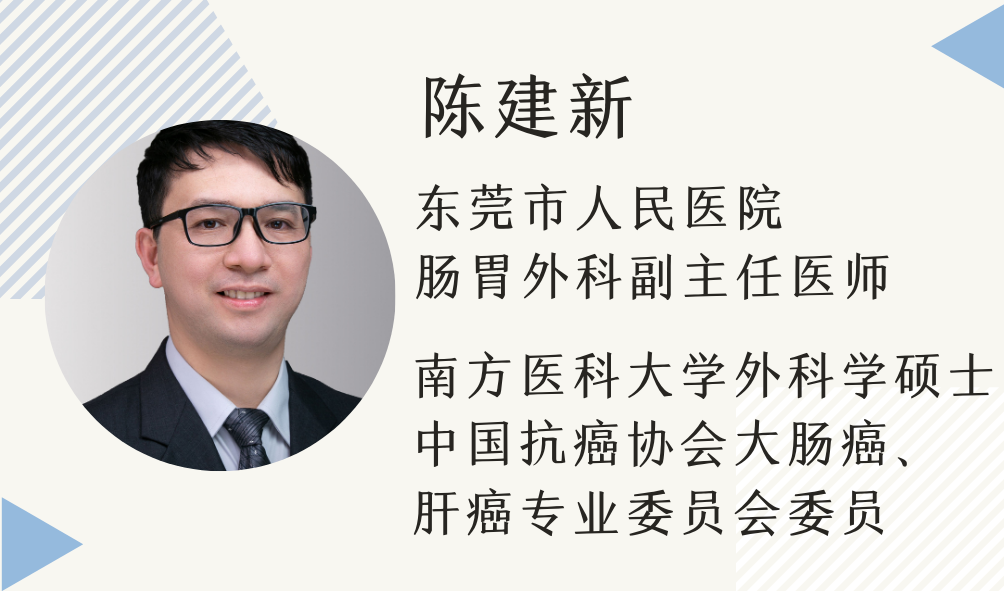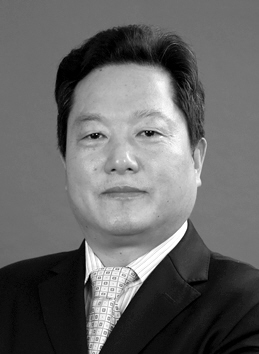术中磁共振成像技术的现状与展望
高场强MRI已由单纯的脑结构成像扩展至脑功能研究与代谢分析新领域,主要包括:(1)BOLD 由日本科学家小川诚二(Seiji Ogawa)[15]首先提出,以血红蛋白为内源性造影剂,通过脑皮层功能区神经元激活时血氧饱和水平变化实现成像。通过计算机图像后处理技术将BOLD影像叠加于脑结构图像上,即可精确描绘运动、语言、视觉、情感、认知、记忆和学习等多种高级神经功能区在脑皮层的个体化分布图。Lehericy[16]和吴劲松[17]等均报道BOLD定位运动皮质与“金标准”术中直接电刺激技术的对照研究,结果高度吻合。Rutten[18]等和郎黎琴[19]等的研究显示BOLD与电刺激技术定位语言皮层亦具有良好的一致性。将BOLD影像应用于功能神经导航手术,丰富了导航影像的信息量,实现术中解剖结构和功能皮层的个体化、实时、精确定位。(2)DTI 在DWI此基础上发展起来的DTI可以实现皮层下神经功能传导通路的三维示踪成像(Tractography)。应用多影像融合技术将DTI与MRI结构影像融合,可清晰显示病灶与神经传导束的毗邻关系,用于功能神经导航手术。目前已有I级循证医学证据[20]显示基于DTI锥体束成像的功能神经导航可以显著提高运动区脑胶质瘤的全切除率,同时保护运动传导通路,降低术后致瘫率,延长患者术后生存时间,改善生活质量。目前基于DTI Tractography的功能导航软件已经获得美国和我国食品药品监督管理局认证。多弥散张量、弥散波谱成像、方向性弥散功能(directional diffusion function, DDF)等新技术[21-24]的出现,可提供更加接近白质纤维、栩栩如生的三维立体示踪影像。但Nimsky证实手术过程中主要神经传导束会发生-8mm到+15mm(2.7±6.0 mm)的“脑移位”误差。针对该问题,其应用1.5T iMRI进行术中实时DTI成像,动态更新导航影像[25]。另一可行的“脑移位”纠正途径是术中利用基于非刚体配准算法的脑变形模型,把变形纠正后的DTI神经传导束影像与低场强iMRI实时脑结构影像融合[26]。(3) MRS利用原子核因外加磁场作用而产生的微小化学位移来采集信息,是目前惟一无创性活体研究机体生理或病理代谢变化的技术。由于不同化合物或单质之间MR波谱信息存在差异,通过测定脑组织及病灶内某些代谢物的化学定量信息,MRS可实现对病变的定性诊断。MRS技术主要采集人体内除水和脂肪外的其他化合物中原子核的化学位移信号,最常用的是氢质子(1H),即1H-MRS。相比较常规MRI只能从形态学显示病变,1H-MRS可从代谢方面判定病变性质及增殖活性。在许多疾病的发生过程中,其代谢变化较病理形态改变为早,而MRS对检测代谢变化的敏感性很高,因此对疾病能早期检出。国外研究发现1H-MRS对脑肿瘤病理特征和治疗预后的判断准确性约为96%[27]。1H-MRS可用来确定脑胶质瘤代谢异常边界,比MRI更接近实际的病理学边界[28],为手术、放疗或活检提供参考。随着MR设备与图像后处理技术的进步,MRI空间信号与MRS化学信息得以整合,称之为磁共振波谱成像(Magnetic resonance spectroscopy imaging, MRSI)。MRSI不仅能用数值或频谱表达单位体素(voxel)内的化学定量信息,也能用图像形式来表达机体的代谢分布信息。这就为MRSI应用于神经导航手术提供了依据。术中实时MRSI有可能成为高场强iMRI的一个重要发展方向,通过对脑胶质瘤手术切缘组织性质的实时分析,引导手术切除范围更逼近实际的肿瘤组织学边界。
六、展望
总之,高场强iMRI以其高效实时,时空分辨力高、以及脑功能与代谢成像等技术优势,为神经导航外科的发展开辟了一片崭新天地,同时也激发了人们对于技术进步的更多期待:⑴iMRI设备和技术的不断完善,包括高场强、高梯度性能、高线圈密度、多通道信号采集和高性能计算机等;⑵创建以iMRI为中心的数字一体化神经外科手术中心,交互融合多种微侵袭新技术,使手术创伤更小,疗效更好;⑶应用高场强甚至超高场强iMRI,实施术中BOLD、DTI与MRSI等实时成像与导航手术。
参考文献
1. Alexander E, 3rd, Moriarty TM, Kikinis R, et al. Innovations in minimalism: intraoperative MRI. Clin Neurosurg , 1996, 43:338-352.
2. Black PM, Moriarty T, Alexander E, 3rd, et al. Development and implementation of intraoperative magnetic resonance imaging and its neurosurgical applications. Neurosurgery, 1997, 41:831-845.
3. 周良辅, 毛颖, 吴劲松等. 神经导航外科学. 上海科技教育出版社, 2008:201-213.
4. Schwartz RB, Hsu L Wong TZ. Intraoperative MR imaging guidance for intracranial neurosurgery: experience with the first 200 cases. Neuroradiology, 1999,2l1(2):477-488.
5. Wirtz CR, Knauth M, Staubert A, et al. Clinical evaluation and follow-up results for intraoperative magnetic resonance imaging in neurosurgery. Neurosurgery, 2000, 46:1112-1120.
6. Wu JS, Shou XF, Yao CJ, et al. Transsphenoidal pituitary macroadenomas resection guided by PoleStar N20 low-field intraoperative magnetic resonance imaging: comparison with early postoperative high-field magnetic resonance imaging. Neurosurgery, 2009, 65:63-70.
7. Nimsky C, Von Kekker B, GanslandT O, et al. Intra-operative high-field magnetic resonance imaging in transsphe-noidal surgery of hormonally inactive pituitary macroadenomas. Neurosurgery, 2006, 59(1):105-114.
8. Liu H, Hall WA, Martin AJ, et al, MR-guided and MR-monitored neurosurgical procedures at 1.5T. J Comput Assist Tomogr, 2000, 24 (6):909-918.
9. Bernays RL, Kollias SS, Khan N, et al. Histological yield, complications, and technological considerations in 114 consecutive frameless stereotactic biopsy procedures aided by open intraoperative magnetic resonance imaging. J Neurosurg, 2002, 97:354-362.
10. Nimsky C, Ganslandt O, Fahlbusch R. Comparing 0.2 tesla with 1.5 tesla intraoperative magnetic resonance imaging analysis of setup, workflow, and efficiency. Acad Radiol, 2005, 12:1065-1079.
11. Wolfsberger S, Ba-Ssalamah A, Pinker K, et al. Application of three-tesla magnetic resonance imaging for diagnosis and surgery of sellar lesions. J Neurosurg, 2004, 100: 278-286.
12. Nagae-Poetscher LM, Jiang H, Wakana S, et al. High-resolution diffusion tensor imaging of the brain stem at 3T. AJNR Am J Neuroradiol, 2004, 25:1325-1330.
13. 昌仁民, 刘广保, 张玉忠, 等. 3.0T磁共振的临床应用特点研究. CT理论与应用研究, 2008, 17: 76-81.
14. 田建广, 刘买利, 夏照帆, 等. 磁共振成像的安全性. 波谱学杂志, 2000, 17: 505-511.
15. Ogawa S, Lee TM, Kay AR, et al. Brain magnetic resonance imaging with contrast dependent on blood oxygenation. Proc Natl Acad Sci U S A, 1990, 87:9868-9872.
16. Lehericy S, Duffau H, Cornu P et al. Correspondence between functional magnetic resonance imaging somatotopy and individual brain anatomy of the central region: comparison with intraoperative stimulation in patients with brain tumors. Am J Surg, 2005, 189:388-394.
17. 吴劲松, 周良辅, 陈伟, 等. 功能磁共振成像定位皮质运动区与术中电刺激运动诱发电位的前瞻对照研究. 中华外科杂志, 2005,43(17): 1141-1145.
18. Rutten GJ, Ramsey N.F, van Rijen PC, et al. Development of a functional magnetic resonance imaging protocol for intraoperative localization of critical temporoparietal language areas. Ann Neurol, 2002, 51:350-360.
19. 郎黎琴, 徐启武, 潘力, 等. Bold技术与皮质电刺激定位语言功能区的比较. 中国医学计算机成像杂志, 2005,3:156-160.
20. Wu JS, Zhou LF, Tang WJ, et al. Clinical evaluation and follow-up outcome of diffusion tensor imaging-based functional neuronavigation: a prospective, controlled study inpatients with gliomas involving pyramidal tracts. Neurosurgery, 2007, 61:935-948.
21. Wiegell MR, Larsson HBW, Wedeen VJ. Fiber crossing in human brain depicted with diffusion tensor MR imaging. Radiology, 2000, 217:897-903.
22. Yoshiura T, Kumazawa S, Noguchi T, et al. MR tractography based on directional diffusion function validation in somatotopic organization of the pyramidal tract. Acad Radiol, 2008, 15:186-192.
23. Kamada K, Todo T, Masutani Y, et al. Combined use of tractography-integrated functional neuronavigation and direct fiber stimulation. J Neurosurg, 2005, 102: 664-672.
24. Bello L, Gambini A, Castellano A, et al. Motor and language DTI Fiber Tracking combined with intraoperative subcortical mapping for surgical removal of gliomas. Neuroimage, 2008, 39:369-382.
25. Nimsky C, Ganslandt O, Hastreiter P, et al. Preoperative and intraoperative diffusion tensor imaging-based fiber tracking in glioma surgery. Neurosurgery, 2005, 56:130-137.
26. 姚成军, 毛颖, 张荣,等. 低磁场术中磁共振导航的融合弥散张量成像功能研究. 中国临床神经科学, 2007, 15:241-247.
27. Mishra AM, Gupta RK, Jaggi RS, et al. Role of diffusionweihted imaging and in vivo proton magnetic resonance spectroscopy in the differential diagnosis of ring-enlancing intracranial cystic mas lesion. J Comput Assist Tomogr, 2004, 28(4):540-547.
28. Ganslandt O, Stadlbauer A, Fahlbusch R, et al. Proton magnetic resonance spectroscopic imaging integrated into image-guided surgery: correlation to standard magnetic resonance imaging and tumor cell density. Neurosurgery, 2005, 56:291-298.















